Twenty years ago, in the night between 26 and 27 May 1993, a bomb exploded in Via dei Georgofili, which killed five people, wounded nearly fifty and damaged a part of the heritage of the Uffizi Gallery.
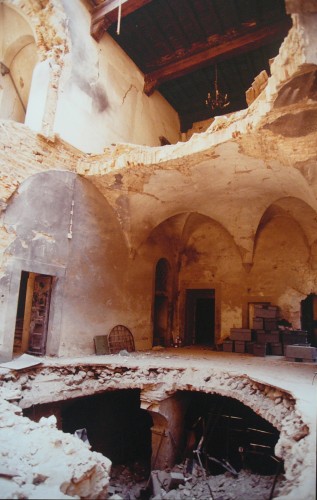
Three paintings were lost, while in total about 200 were damaged (150 paintings and 50 sculptures), between those exposed in the museum, those in the hallway of the Vasari Corridor, and those in storage.
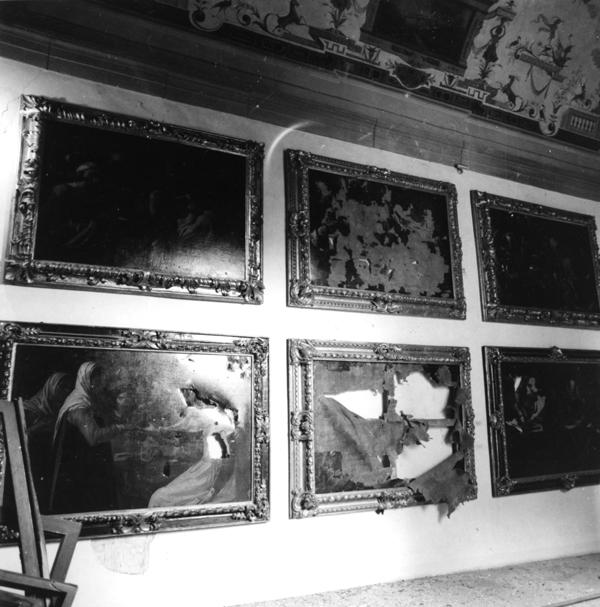
In 2004, a hundred-year-old olive tree was placed in front of the Accademia dei Georgofili as a living memorial to the victims of the massacre.The tree bears a plaque in Italian and 10 other languages, wishing that “all passersby will remember the barbaric act that took place on May 27, 1993 and all those that suffered will be in our minds and hearts.”
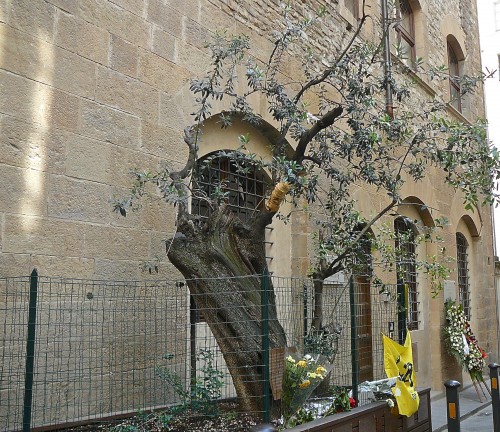
The tree has not weathered the years in the alley behind the Uffizi well. It is now bandaged and bare.
In 2008, the City of Florence placed a bronze piece depicting the blast was placed on the wall across from the Accademia.
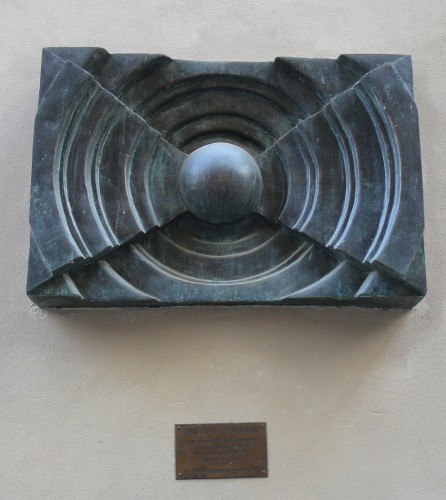
In 2011, President Napolitano came to commemorate a plaque on the wall of the Accademia dei Georgofili with the names of the victims inscribed.
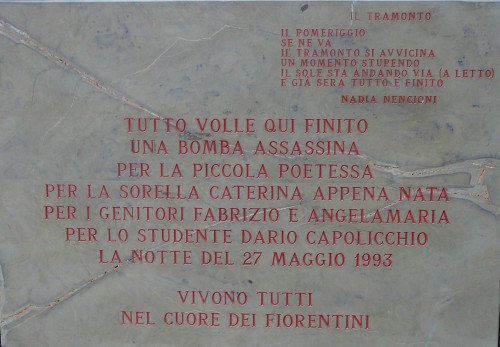
This year on May 26, the Uffizi Gallery unveiled a specially commissioned statue, which is placed some 20 meters above ground on the wall of the Uffizi Gallery facing Via dei Georgofili. Made by Tuscan artist Roberto Barni, the 2-meter tall statue in bronze is entitled “I Passi d’Oro” (The Golden Strides). It was presented to the public in the Salone de’ Cinquecento of the Palazzo Vecchio by president of the Italian Senate, Pietro Grasso, with members of the Association of Relatives of the Victims of via dei Georgofili in attendance.
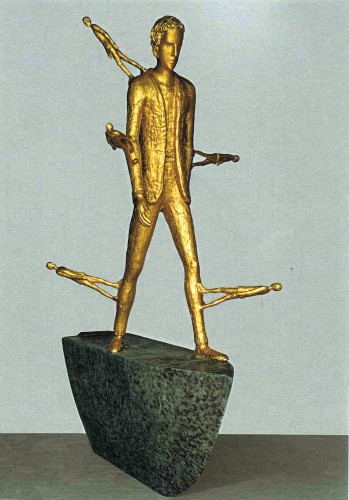
This is the first time the non-profit Friends of Florence Foundation, chaired by Simonetta Brandolini d’Adda, supported the creation of a sculpture dedicated to the commemoration of a tragic episode in Italian history, rather than its usual work of restoration of Renaissance sculpture and paintings in Florence. (The Friends of Florence were instrumental in the restoration of most of the sculptures on the Loggia dei Lanzi.)
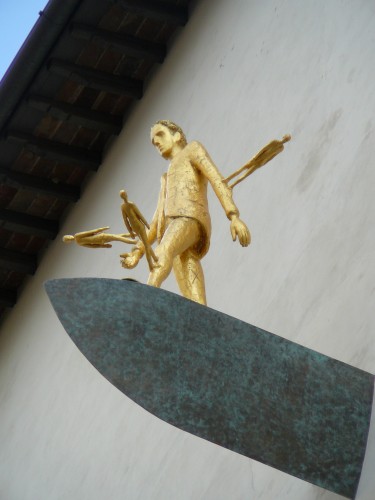
The six-foot statue of bronze, covered in gold leaf, depicts a striding golden figure of a man with five small attached figures (representing each of the victims) on a blade of stone. See the video of the unveiling in situ.
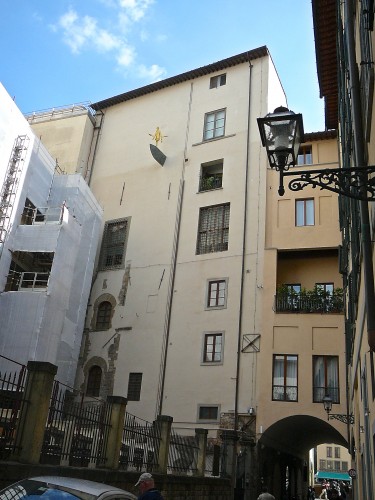
Perhaps only the powers that be of the Uffizi Gallery can explain why the impressive six-foot sculpture by Barni is placed so high on the museum’s exterior wall that it can barely be seen. Is this the age-old problem that Florence has displaying modern art where people can actually see it or is it the difficulty of attaching a heavy bronze to the medieval Torre dei Pulci, where there was the most loss of life, or is there some other reason? I, for one, would support the repositioning of I Passi d’Oro.
